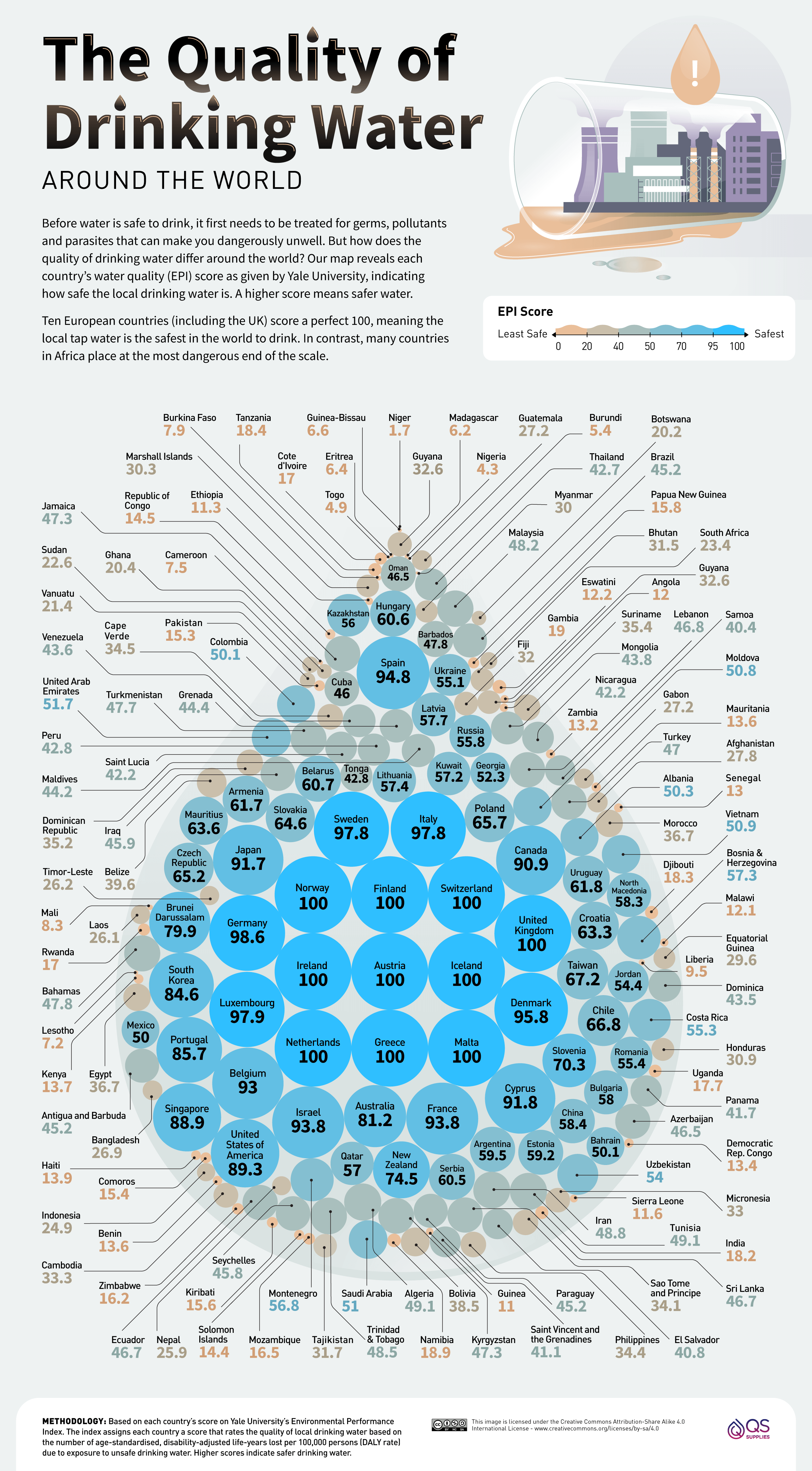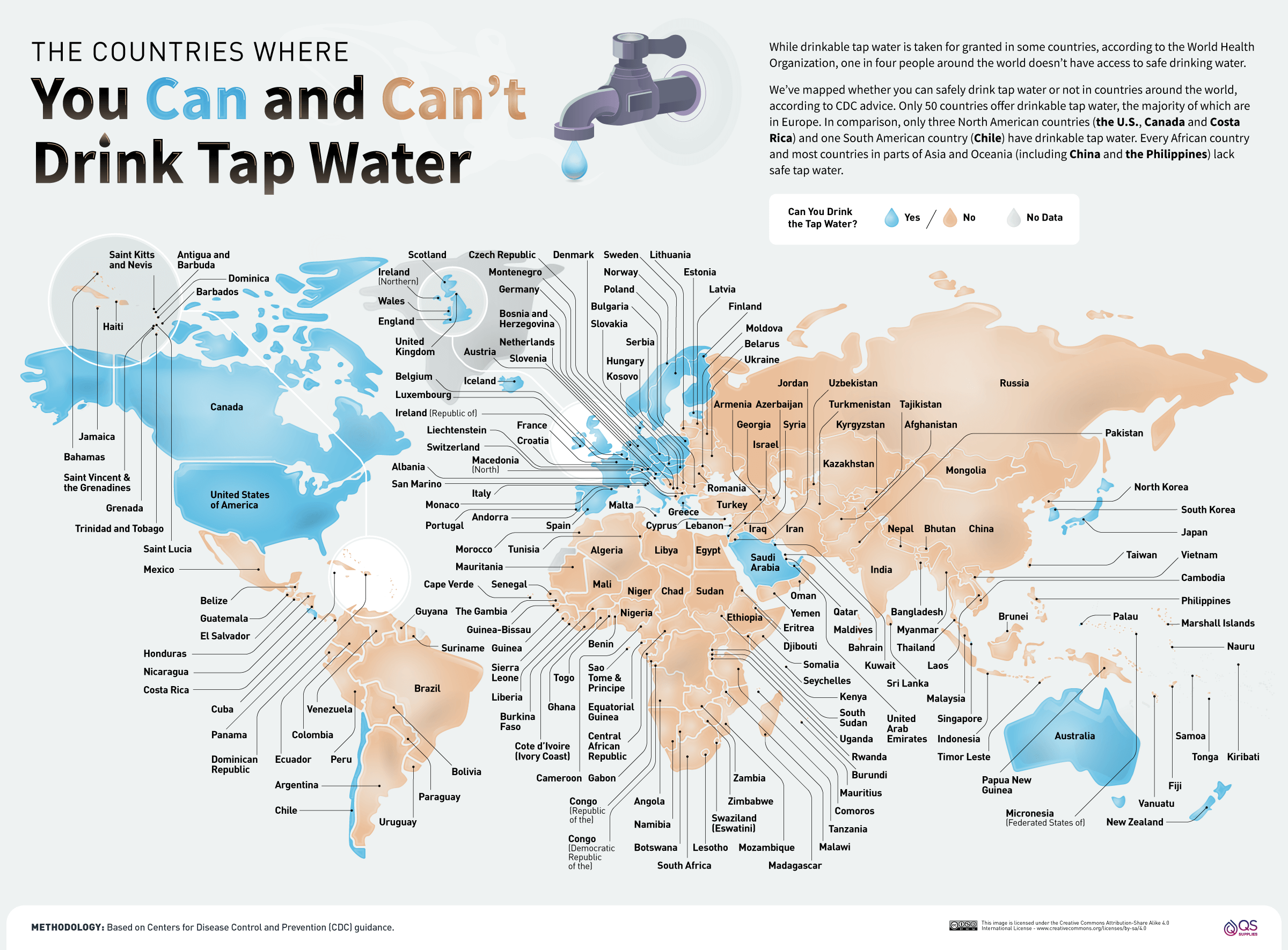What could be simpler than drinking a glass of water?
In the UK, when you turn on the tap, you assume what comes out will be drinkable. Indeed, the UN General Assembly recognises access to safe drinking water as a human right. And yet, more than a quarter of the world's population lives in water-stressed countries, and a similar number use a drinking water source contaminated with faeces, according to the World Health Organization.
Unfortunately, national wealth can be a deciding factor in whether a person can pour a safe glass of water to drink. According to the Environmental Performance Index (EPI), "good [environmental health] policy results are associated with wealth (GDP per capita), meaning that economic prosperity makes it possible for nations to invest in policies and programs that lead to desirable outcomes." To make matters worse, the heavy industry poorer countries employ in the attempt to level up can further compromise the local water.
The EPI index is designed to rate and monitor water quality around the world. Experts assign each country a water quality score based on the number of (adjusted) life years lost per 100,000 persons (DALY rate) due to exposure to unsafe drinking water. This number itself is based on the IHME's Global Burden of Disease study.
To illustrate the starkness of the situation and to flag the countries where it is and isn't safe to drink the tap water, QS Supplies has used EPI and CDC data to create a set of new data visualisations.
Key Findings
● Ten countries have the maximum 100 EPI score for water, and they're all in Europe.
● However, the European countries of Albania (50.3) and Moldova (50.8) achieve barely half
of this.
● The 24 countries with the lowest EPI rating are all in Africa, and the CDC warns against
drinking tap water anywhere in Africa.
● The CDC discourages drinking tap water in much of Asia and Latin America.


This post may contain affiliate links. As an Amazon Associate, I earn from qualifying purchases.
Comments
Post a Comment